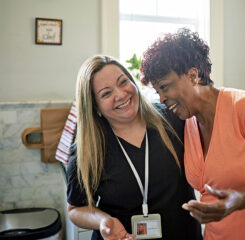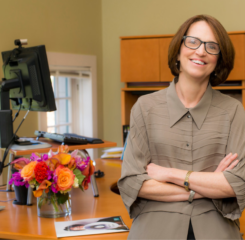The 2024 McKnight’s Tech Awards recently celebrated highly innovative technology solutions–and pointed to trends shaping the long-term care industry. As one of the judges for this year’s awards, I had the privilege of reviewing some truly remarkable entries, each showcasing the transformative power of technology in aging services.
These awards honored technologies initiatives that are enhancing resident care, boosting staff efficiency, and bridging the gap between advanced tech and compassionate caregiving. Congratulations to all the winners for their incredible achievements!
Taken together, the technologies that this year’s winners are using reveal three prominent trends:
- Artificial Intelligence (AI) is transforming care delivery. A standout example is the partnership between Butlr, an AI platform for intelligent buildings, and Ranagard Community to deploy AI thermal sensors in 700 apartments to discreetly monitor resident movements, alerting staff to potential falls. This proactive system not only enhances resident safety but also frees up staff time by reducing unnecessary checks. Nazareth Home, a nonprofit long-term care and recovery community, embraced AI through the TrueLoo smart toilet, which Toi Labs developed to analyze bowel and bladder patterns, enabling early detection of health issues and data-driven care adjustments. For instance, an increase in frequency of a resident’s toilet use can trigger more frequent observation by healthcare providers. By reducing the need for subjective observations, this technology empowers caregivers to provide more precise and effective care.
- Virtual Reality (VR) is creating immersive, therapeutic experiences for residents. Beyond entertainment, VR is becoming a powerful tool to improve well-being, particularly for residents with cognitive impairments.Gurwin Healthcare System, a nonprofit healthcare organization and this year’s “Best in Show” winner, exemplifies the trend with its VR room designed for residents with dementia. The room uses multisensory stimulation to evoke positive memories and foster engagement. Advanced projector technology can show images on the walls, and the room can generate sounds and scents that help soothe residents with dementia and to help them access memories. RiverSpring Living, which offers a wide range of care solutions for older adults in New York, also utilizes VR in a unique way—creating virtual home environments for discharging patients. By obtaining images from within the patient’s home, VR allows therapists to conduct remote safety evaluations and recommend modifications for a safer, smoother transition.
- Seamless data integration and workflow optimization are now essential. Efficient operations are critical to delivering high-quality care, and many award winners are focusing on tools that streamline caregiver workflows and facilitate data-driven decisions. IntellaTriage offers nurse-first triage and customized workflows to home healthcare and hospice agencies. Its partnership with CommonSpirit Health and Home, which offers home care services, exemplifies efficiency. Their integrated system improves communication between home health and hospice providers, reducing administrative tasks and allowing nurses to spend more time with patients. Sage, which shares data and insights for operations management for senior living, and Sonida Senior Living received praise for their operations management system. By consolidating incident response and care tracking data, it gives staff a real-time view of resident needs and staffing levels. The system has lowered incident response time by 65% and more than tripled caregiver satisfaction. Additionally, RiverSpring Living’s real-time staffing dashboard, developed with Workforce Fusion, ensures optimized resource allocation based on resident needs and staff availability.
The 2024 McKnight’s Tech Awards highlight the industry’s growing embrace of cutting-edge technologies that are reshaping how care is delivered, creating a more sustainable future. As a judge, I was deeply impressed by the innovation and dedication on display, and I look forward to seeing how these technologies will continue to enhance the lives of those receiving and providing care.

 Shutdown Week Three: Impact of Ongoing Closure on Affordable Housing
Shutdown Week Three: Impact of Ongoing Closure on Affordable Housing Analysis: CY2026 Home Health Final Rule
Analysis: CY2026 Home Health Final Rule


